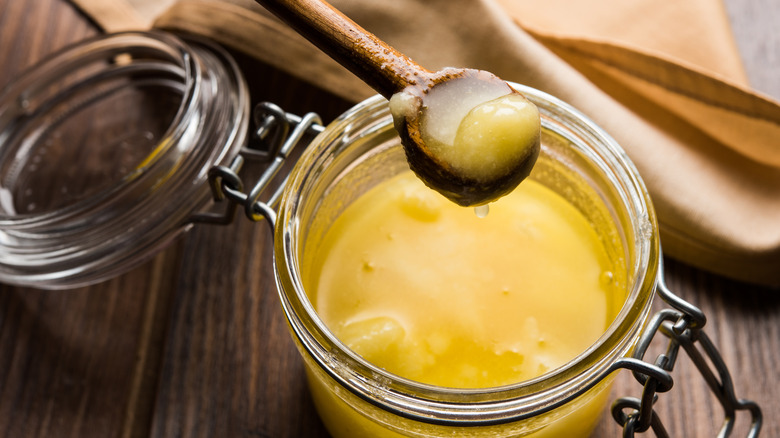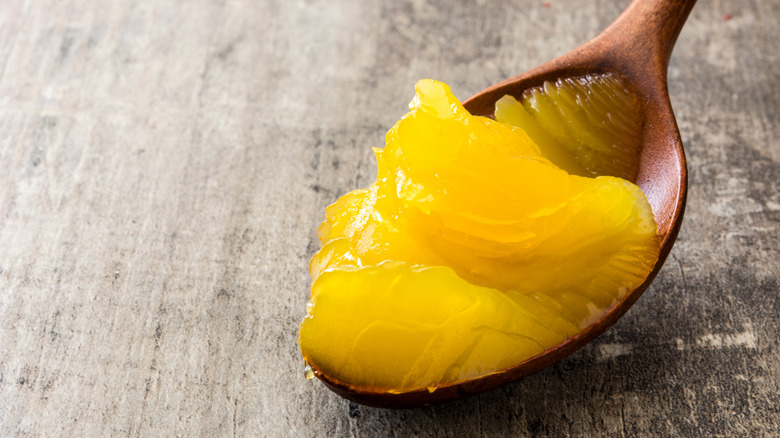The Real Difference Between Clarified Butter And Ghee
The terms clarified butter and ghee are often used interchangeably. While similar in many ways — ahem, both begin as butter — clarified butter and ghee are not actually the exact same thing. For starters, each has its own unique origin story. Clarified butter is associated with French cuisine while ghee is rooted in Indian culture (via Masterclass).
Then there's culinary science to consider. Let's begin with a butter breakdown: Spoon University defines butter as a dairy product composed of butterfat (at least 80 percent), water (16 to 17 percent), and non-fat milk solids (1 to 2 percent). Hailed by chefs around the world as a glorious-cooking fat for both sweet and savory dishes, butter has one major drawback: It starts to burn at a relatively low temperature — 350 degrees Fahrenheit, to be precise. This means foods sauteed or stir-fried in butter or otherwise cooked in butter above this temperature (known as the smoke point) run the risk of tasting burned or icky. Or worse, burning butter can contribute to unhealthy free radicals when consumed.
Both ghee and clarified butter present a solution to this age-old problem by raising the smoke point of butter. As Epicurious points out, herein lies some of the confusion between the two ingredients.
The difference comes down to flavor
How do ghee and clarified butter differ? While both are butter-based shelf-stable cooking fats, they achieve a similar stance in the culinary world through different means. Clarified butter is melted over a low flame, separating into yellow fat and white milk solids. Skim those solids off the top and decant your yellow gold into another container and there you have it: clarified butter.
Ghee is cooked just a bit longer than clarified butter — browning the milk solids and letting them settle to the bottom before straining (miss this step and, oops, you've got brown butter!). The result is pure magic. Toasty, nutty, and delicious, ghee packs all the positives of clarified butter with a distinct edge: its robust flavor. Thanks to an increased smoke point (450 degrees Fahrenheit), you can substitute ghee for butter as well as coconut or olive oils in all your favorite recipes.

